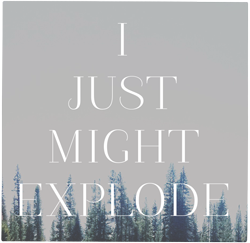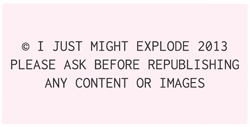Today I am so excited to introduce you to one of my favorite people and favorite places. In early August, I ventured over to my grandparent’s home and spent an afternoon taking photos in my grandam’s painting studio. I emailed her some questions and I was brimming with pride reading her thoughtful and eloquent answers.
Whenever I’m asked who I got my artsiness from, I quickly refer to my grandma. This woman is 89 years old and one of my heroes. She is so wonderfully opinionated, generous, honest, and kind. One of these days I’ll introduce you to my grandpa too.
I’m going to hand it off to her now. All photos in this post are of her studio and the words by her.
My grandma, Barbara Haupt:
I believe that my experience of growing up in the Great Depression years has actually been a most positive one. We young people in the 20’ and 30’s observed and learned as our parents and teachers improvised and created to provide the necessities and even the beautiful things that money was no longer available to provide. My sister and I grew up in style in those years because our mother was able to completely restyle a cast off dress or coat. We spent our evenings creating with the Crayolas that had been invented not long before. We designed clothes for our paper dolls and background sets and costumes for the plays we put on. Nothing was beyond reach of our childhood imaginations!
Prang water colors were a wonderful step up from Crayolas. Using them I was to receive my first recognition as an artist! As a 4th grader, I conceived a water color scene to illustrate the epic poem, “Hiawatha” by Longfellow,. In front of each of my school’s eight grades, I proudly presented my painting of Hiawatha standing near the “shining big-sea waters” of Lake Superior with the forest “rising dark behind” as the poet had painted it in words.
Another advantage of those depression years was that unemployed college teachers were available to teach in our Michigan high schools. I remember several who were especially inspiring. Although no art classes were offered in high school, those teachers encouraged me to use my artistic bent to create illustrations, posters and banners and even a portrait of John Philip Sousa, my first portrait—a project that I remember struggling over.
It was a thrill for me to attend my first art classes when I entered college to work on a BS in art education at what is now known as the University of Northern Michigan. I remembered walking home from my first water color class with the landscape colors virtually jumping out at me. In those days there was no copying of any kind. We painted and sketched only from the still life. the model and also plein aire—a mode which has remained my favorite to this very day.
A scholarship to earn a master’s degree in art history took me to the University of Michigan in 1943. This was preceded by a stint working in a Detroit factory building B24 bombers (World War II was raging at this time). When my “graveyard” 11 to 7 shift was completed in the morning, my co-worker young aunt and I would take the street car to the Detroit Museum of Art for a wonderfully quiet, crowd-free viewing. We had been fortunate in our growing up years as our artistically talented parents exposed us to the art of the world during our vacation visits to the art museums of Chicago, St Louis and Nashville.
My Michigan graduate education included the study of Early Renaissance and East Indian art history. I also experienced my first course in oil painting. This was a graduate course and with classmates who were seasoned oil painters, I became intimidated and a bit discouraged. I found that I had much to learn about the making of art and began to wonder if I was up to it.
From this point on, my pursuit of art went into a stall for a number of reasons. I was hired to teach art and English in Crystal Falls, Michigan but ended up teaching only American History and Government when the teacher of those courses was drafted.
Furthermore, while attending the University of Michigan, I had fallen in love with a young Marine private from Spokane, WA, Harold Haupt, who was studying forestry in the V12 program as a precursor to officer training and active duty in the South Pacific theater. Once those 2nd Lt. bars were in place, we were married and on our way to California where my new Marine officer husband was to depart for the invasion of Japan! We were actually sitting on the beach near the site of that departure on the day The Bomb was dropped—a world shaking and cruelly devastating act of warfare which, however, ended the war in the Pacific and saved millions of American lives—perhaps my new husband’s!
After a peace keeping tour in Japan and discharge from active service, my husband returned to college to earn a MS on the GI bill while I held the fort. Once he had secured a position as a Forest Service Research Hydrologist, the focus of our lives was to be my husband’s career with many moves for the family which eventually included six children. Like most mothers in those days, I taught Sunday School, served as Girl Scout and Cub Scout leader, cooked church dinners, contributed in schools, and entertained the right research people. When the Forest Service Research Center was moved to the U of Idaho campus in Moscow, decorating and illustrating jobs for the University further complicated my schedule.
Respite from these responsibilities did eventually come when our last child left for college.. My husband retired and we purchased forty beautiful mountain acres northwest of Spokane, WA. I designed and we supervised the building of a chalet type home which included my first studio. I then signed up for workshops from some of that era’s notable teachers, Al Brouilette, Naomi Brotherton, Jan Kunz and Irving Shapiro among others. Because I was by then working in oil, pastel and water color, I became active in three art organizations and began to submit paintings in both local and regional competitions. By now, there was an impetus for me in awards being garnered and, also, with the aid of a helpful gallery owner, by some success in sales.
After 20 years of an invigorating mountain lifestyle and as we approached our eighties, we were ready for a less challenging environment. We sold our beautiful mountain home and moved to Boise, Idaho where our youngest son, his wife and young family live. In our new home, I designed my most complete and deluxe studio where I have since spent many happy painting hours. I became active in the Idaho Watercolor Society, entering at least four shows a year and I have been recognized with awards and sales.
Even at an advanced age. that nagging painting muse is still with me insisting that I capture that magic moment–the magnificent thrust of an Idaho mountain backbone or, in our garden, the tender morning light on a budding rose! But with energy that sometimes falters, fewer of those magic moments are producing paintings. Yet the world continues to be a more wonderful place because they still happen for me.
I hope that I have covered this in my bio. Simply put, from an early age, it was something I just had to do—to capture a moment of beauty or of special interest and to express it in a way that came naturally for me.
I have no single favorite “for all seasons” artist . But I do have favorite artists for the different stages of my art experience. Early on, and in the days before color print was common, I was captivated by the 20’ and 30’s great magazine story illustrators whose illustrations appeared in Colliers and in the Saturday Evening Post. I remember their power to bring a great story to life in just pen and ink!
The Regionalist painters of the Depression Years such as Thomas Benton, John Stuart Curry, and Charles Burchfield, with the stark simplicity and honesty of their rural landscapes, influenced me. When I was in high school, “Life” magazine appeared as a revolutionary form of photo journalism. I studied diligently a magazine first– a full color section featuring contemporary American artists who were to give direction for my own goals in art.
Before I began a period of portraiture, painting from the model, I became enraptured with the portraiture of Titian. His tonal skill and his rare ability to capture the subtleties of facial expression struck me as unique in Renaissance portraiture. John Singer Sargent was another favorite portraitist. Like many painters, I went through a period of worshipping the Impressionists–my favourites being Degas and Monet.
If I had to pick one American artist whose work for me has a unique power, it would be Winslow Homer whose paintings tell their own stories with such unique eloquence.
Do you think that there is anything missing in today’s art that was present when you were younger?
Sometimes I catch a lack of sincerity that was more common in our day but I see more pluses than minuses in the art work of today—especially in the photography art of young artists like our granddaughter, Kara!
Thank you so much, Grandma for being so inspiring and for answering my questions!
hey, i know you! is a random feature on IJME where I interview people I personally know who inspire me. See my other interviews here.


































Hello! I just came across this post and feel in love with the work. I hope its not invasive, but I have to ask – are the watercolors sold anywhere?